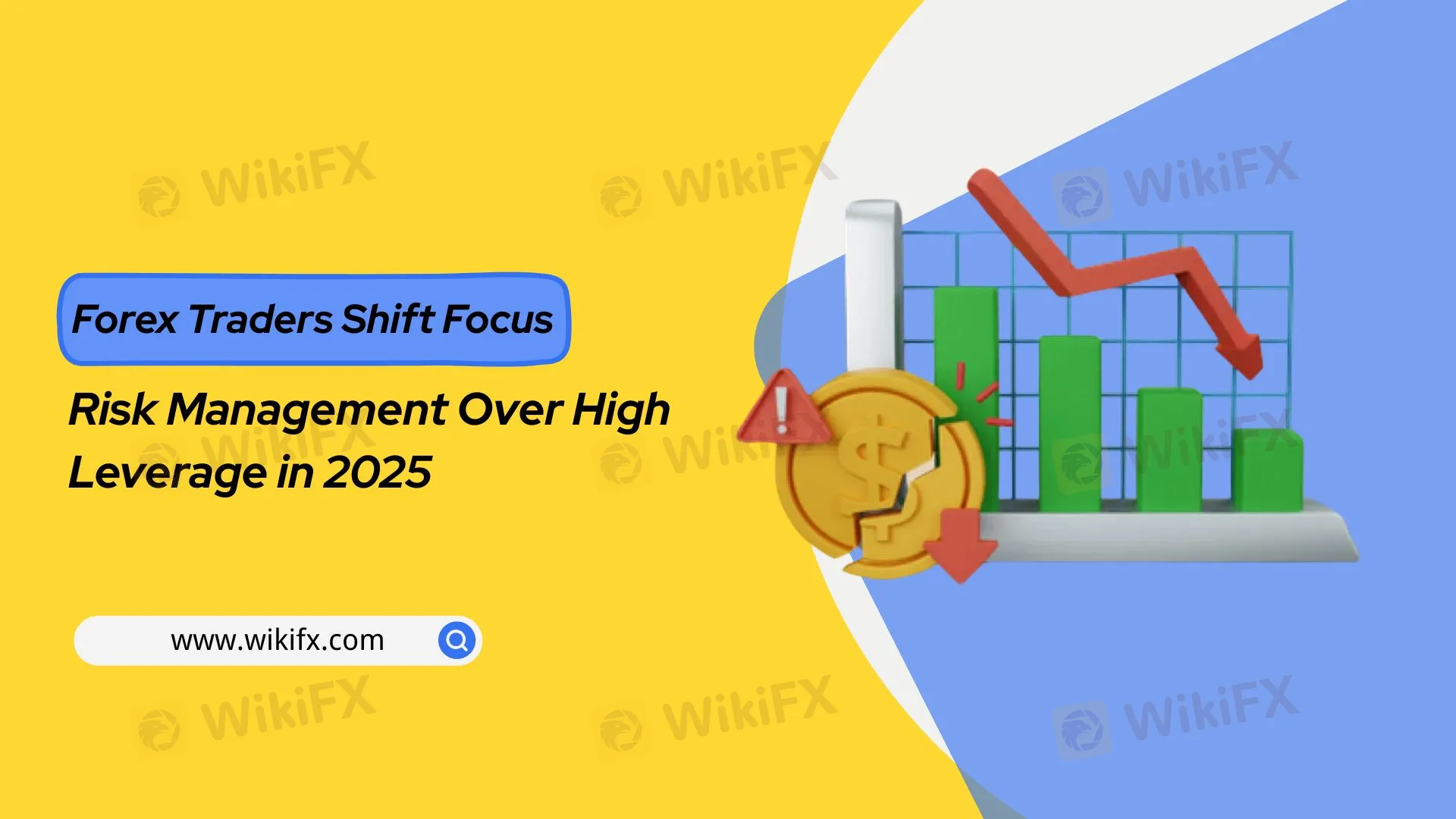简体中文
繁體中文
English
Pусский
日本語
ภาษาไทย
Tiếng Việt
Bahasa Indonesia
Español
हिन्दी
Filippiiniläinen
Français
Deutsch
Português
Türkçe
한국어
العربية
Forex Traders Shift Focus: Risk Management Over High Leverage in 2025
Abstract:Traders are stepping back from ultra-high leverage in 2025, turning toward measured positions and capital preservation.

For much of the past decade, high leverage has been the hallmark of retail forex trading. Ratios as high as 1:500 were widely used, promoted by brokers as a tool to amplify profits on small capital. However, 2025 is revealing a clear change in sentiment: survival and sustainability are overtaking the pursuit of rapid gains.
Shifting Tides in Retail Trading
Following a period of central bank tightening and heightened geopolitical instability, volatility in currency markets has increased noticeably. Sharp moves in major pairs have exposed the vulnerability of overleveraged positions. In response, traders are increasingly reducing their exposure, cutting down lot sizes and relying more on risk management tools than on leverage.
Platforms like X, Discord, and Telegram have seen a surge in educational content from seasoned traders advocating for tighter stop-losses and lower-risk positions. Unlike previous years, this new wave of traders is not afraid to take it slow — they value staying in the game over chasing outsized returns.
Brokers Recalibrate to the New Reality
Regulators have played their part. Inspired by the European Securities and Markets Authority (ESMA), more regions are adopting stricter leverage caps—often limiting retail accounts to 1:30 or lower. While offshore brokers continue offering high leverage, those deals now come with reputational and legal risks.
In parallel, brokers are shifting how they onboard and educate clients. Many now default to conservative leverage settings, and some have integrated pre-trade risk summaries—clearly showing margin usage and liquidation levels before a trade is confirmed.
Survival Over Speed
The trend is not about fear—its about discipline. In an environment marked by surprise rate moves and unpredictable news cycles, traders who respect capital preservation stand a better chance at longevity.
Newer traders are also increasingly adopting tools like risk calculators and volatility trackers. Daily risk caps of 1–2% per trade are becoming standard. Lot sizes are scaled based on market events. These changes reflect a shift from speculative behavior toward structured, rule-based strategies.
Conclusion
2025's forex landscape is reshaping around a core principle: measured risk-taking. While leverage remains a powerful tool, its indiscriminate use is increasingly seen as a liability, not an advantage. The traders most likely to succeed this year are not those chasing big wins—but those who manage small losses and compound consistency.
Disclaimer:
The views in this article only represent the author's personal views, and do not constitute investment advice on this platform. This platform does not guarantee the accuracy, completeness and timeliness of the information in the article, and will not be liable for any loss caused by the use of or reliance on the information in the article.
Read more

IFC Markets: The Broker With No License!!
When evaluating a forex broker, regulatory status is one of the most important indicators of credibility and investor protection. In the case of IFC Markets, WikiFX’s findings raise several red flags that potential traders should carefully consider before engaging with this platform.

How to Tell If the Forex Market Is Good to Trade Today?
Wondering if today is a good day to trade forex? Learn how to evaluate market conditions using volatility, session timing, technical clarity, and economic news—without relying on guesswork.

Is forex trading profitable?
Many traders think that forex trading can make quick profits, but the truth is more complex. While some people do make money in the forex market, others fall prey to its many pitfalls because, in this industry, the scams and misleading promises are widespread.

MT4 and MT5 Platforms - Helping Traders Up Their Forex Trading Game
Developed by MetaQuotes Software Corp, MetaTrader 4 and MetaTrader 5 apps come integrated with a wide range of tools that enable seamless forex investments. Learn more about their utilities.
WikiFX Broker
Latest News
Global stock markets are calling Trump's bluff on tariffs
Trump's tariffs overshadow the pomp and pageantry as Macron meets King Charles
Boeing delivers most airplanes since late 2023 after ramping up 737 Max output
Inflation expectations drift back down to pre-tariff levels, New York Fed survey shows
10 Unlicensed Brokers Exposed – Check Now to Stay Safe!
Exposed: Ibell Markets - A Scam Broker That Does Not Allow Withdrawals
Gold Prices to Fluctuate This Week Amid July 9 Tariff Deadline, Fed Policy
America's Deficit Reckoning: How the U.S. debt spiral could spark a crisis
Treasury yields hold steady as Trump extends tariff deadline
Asia-Pacific markets mostly rise as investors assess Trump's steep tariffs
Currency Calculator


